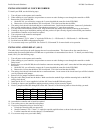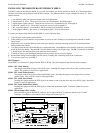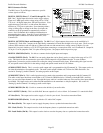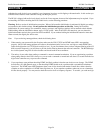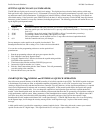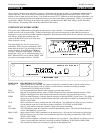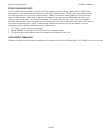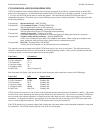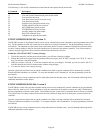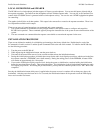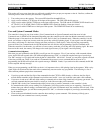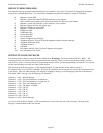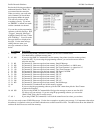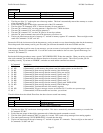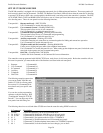
Pacific Research Solutions RI-300e User Manual
Page 29
CTCSS DECODE AND ENCODE OPERATION
CTCSS (Continuous Tone Controlled Squelch System) decode and encode is provided as a standard feature on the RI-300
using state of the art devices. All standard and non standard EIA CTCSS tones can be decoded or encoded. You may select 1,
2, 3 or up to all 50 CTCSS decode tones to operate the repeater. The controller has divided CTCSS decode into six
independent tone panels. This allows you to assign a different group of tones for different functions. These tone panels have
the following functions:
Tone panel #1: Repeater audio only. (RPT-TS LED)
Tone panel #2: User commands Control. (Flashing DTMF LED)
This tone panel allows access of user commands.
Tone panel #3: S-Commands and Programming. (Flashing SYSTEM LED)
This tone panel allows access to S-Commands and programming.
Tone panel #4: Auxiliary output audio. (Flashing AUX LED)
Used when connecting two controllers are connected together for linking and remote base operation.
Tone panel #5: Telephone audio and dial commands. (Flashing HOOK LED)
Used to access, dialing and pass audio to the telephone interconnect. When setting up the telephone tone
panel, include the same tones/code in the repeater and user command tone panels.
Tone panel #6: Dial Click. (Flashing DIAL CLICK LED)
Used for dial click commands, see S-Command 49 for more information.
The controller comes programmed with 100 Hz CTCSS tone ready for use in all six tone panels. The default tone may be
changed or additional tones added, see S-Command 20 or the programming software. Once you have selected the tones that
you want to decode, you will need to enable each of the tone panels.
Tone Panel S-Command
1 (Repeater) 01 3
2 (User Commands) 14 1 1
3 (S-Commands) 14 2 1
4 (Auxiliary output) 34 3
5 (Telephone audio) 72 1
6 (Dial Click) See S-Command 49
Each tone panel will display valid decode activity on the front panel of the controller by means of the LED display.
Tone Panel LED Display Mode
1 (Repeater) TSQ Continuous
2 (User Commands) DTMF Flashing 4Hz
3 (S-Commands) SYS Flashing 4Hz
4 (Auxiliary output) AUX Flashing 4Hz
5 (Telephone audio) HOOK Flashing 4Hz
6 (Dial Click) Dial Click Flashing 4Hz
CTCSS encode tones may be any one or more of the 50 standard and non-standard tones (S-Command 21 and 22). The encode
deviation level can be adjusted up and down from the default level (S-Command 23). The received or incoming CTCSS tones
may be passed to the repeater transmitter, or filtered (removed with a high pass filter, with no tone going out to the repeater
transmitter). Under normal conditions, you will filter out in incoming tone and re-encoding a new CTCSS tone either on the
same or a selected different frequency. This CTCSS encode mode is set by S-Command 21.
The CTCSS encode level is remotely adjusted with a digital pot in the same manner as the transmitter modulation, except with
S-Command 24. The CTCSS encoder generates tone on the voice audio path.



